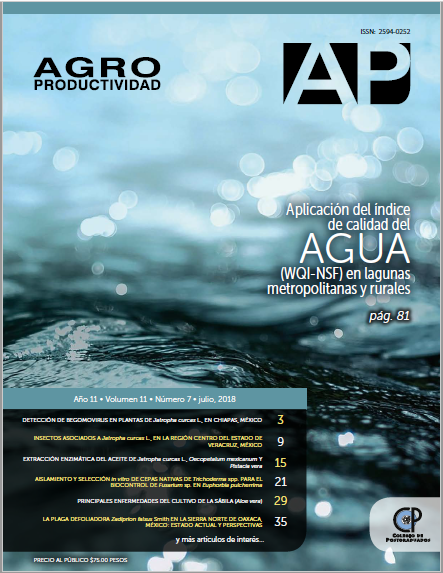APPLICATION OF THE WATER QUALITY INDEX (WQI-NSF) IN METROPOLITAN AND RURAL LAGOONS
Main Article Content
Keywords
Grijalva Basin, Mexican standards, public health, urbanization.
Abstract
Unsustainable fringe urbanization affects the water quality and the public health. Then, the Water Quality Index of the National Sanitation Foundation (WQI-NSF) was measured in six lagoons in the Villahermosa metropolitan zone (ZM) and surrounding rural zone (ZR) during low and high flow, in the floodplain of Grijalva River, Mexico. The aim was to estimate whether the water quality in the lagoons is suitable for public health. In the ZM, the two lagoons registered medium water quality in both flow conditions. In the ZR, the water quality in the four lagoons varied from good to bad, but they kept
better water quality during the high flow than the low one. The bad water quality is tied to the fringe urbanization impact. Instead, the good water quality was associated with the presence and coverture of aquatic vegetation, which favors the water depuration and highlights its benefits to conserve environmental services. The fecal coliforms (CF) and the total phosphorus (PT-PO4) negatively and frequently affected the WQI-NSF rating and exceeded the Norms of water quality for urban public use in Mexico, which display their potential public health risk.

